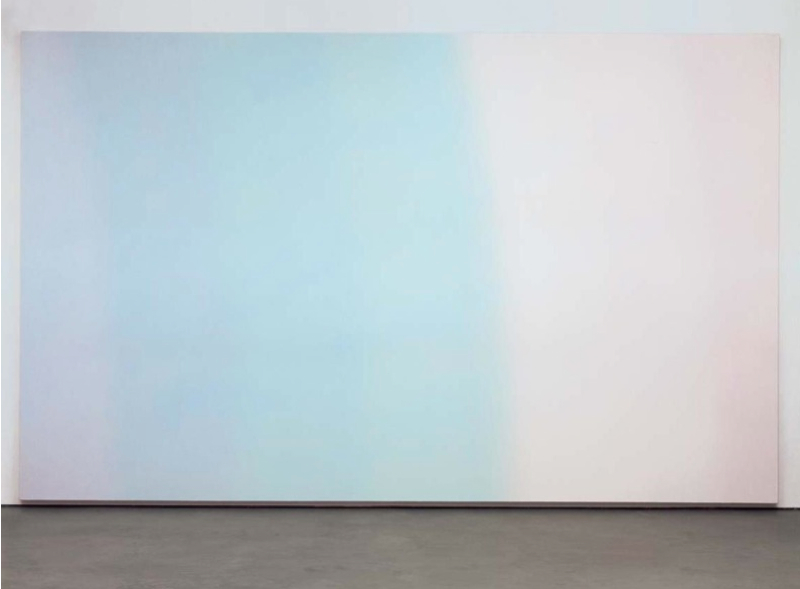Jan Andriesse
Jakarta Indonesia - Amsterdam The Netherlands
Rainbow
1995
acrylic paint on linen
350 x 567,5 cm
1995.JA.01
The bands of color in the immense painting Regenboog (Rainbow) merge indiscernibly with each other; it is impossible to tell where the one color ends and the other begins. The painting came about in connection with the playful question which the artist asked himself: ‘What, for the queen, would be the most beautiful thing to look at in nature?’ After several months of deliberation, the answer was simple: a rainbow. The painting was made in daylight. It was finished when the cool hues were dominant in the morning and the warm hues, in turn, emerged in the afternoon light. Artificial light, which can always be reduced to a directed source, rigidifies too much and imposes a frame. Daylight is more general and fuses with the painting. The result is a surface shimmering with light. The bands of color have been applied layer by layer and matted, as it were, with the marble powder that Andriesse mixes into his paint. Traces of the brush have been wiped away, giving rise to a transparent surface which lacks any evidence of artisanry, even of materiality. The eye attempts to get a grip on it but can find no point on which to focus. Despite the undeniable aesthetic quality of the painting, there is nonetheless an eventual desire to free oneself from its blinding force for a moment and give the eye a brief rest.
Jan Andriesse succeeds in giving material expression to an ephemeral phenomenon while also touching on its essence of immateriality. The rainbow has the look of an enlarged detail on the wall, though the full extent of its intangibility is rendered at the same time. The artist does not depict a rainbow but shows what a rainbow is. As such he creates a real, sensory experience for the viewer.
Jan Andriesse succeeds in giving material expression to an ephemeral phenomenon while also touching on its essence of immateriality. The rainbow has the look of an enlarged detail on the wall, though the full extent of its intangibility is rendered at the same time. The artist does not depict a rainbow but shows what a rainbow is. As such he creates a real, sensory experience for the viewer.
